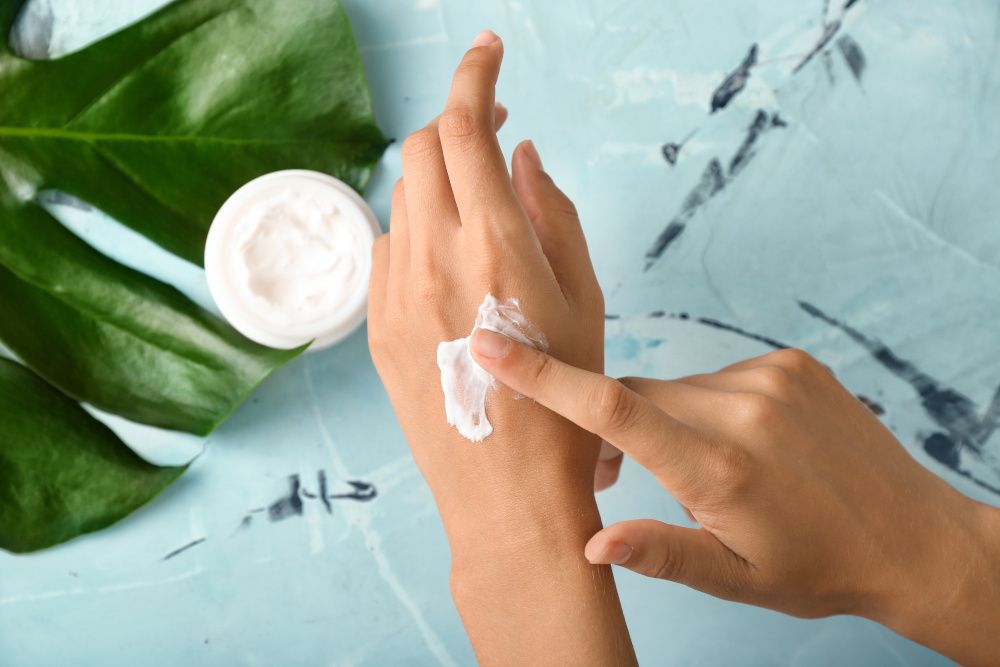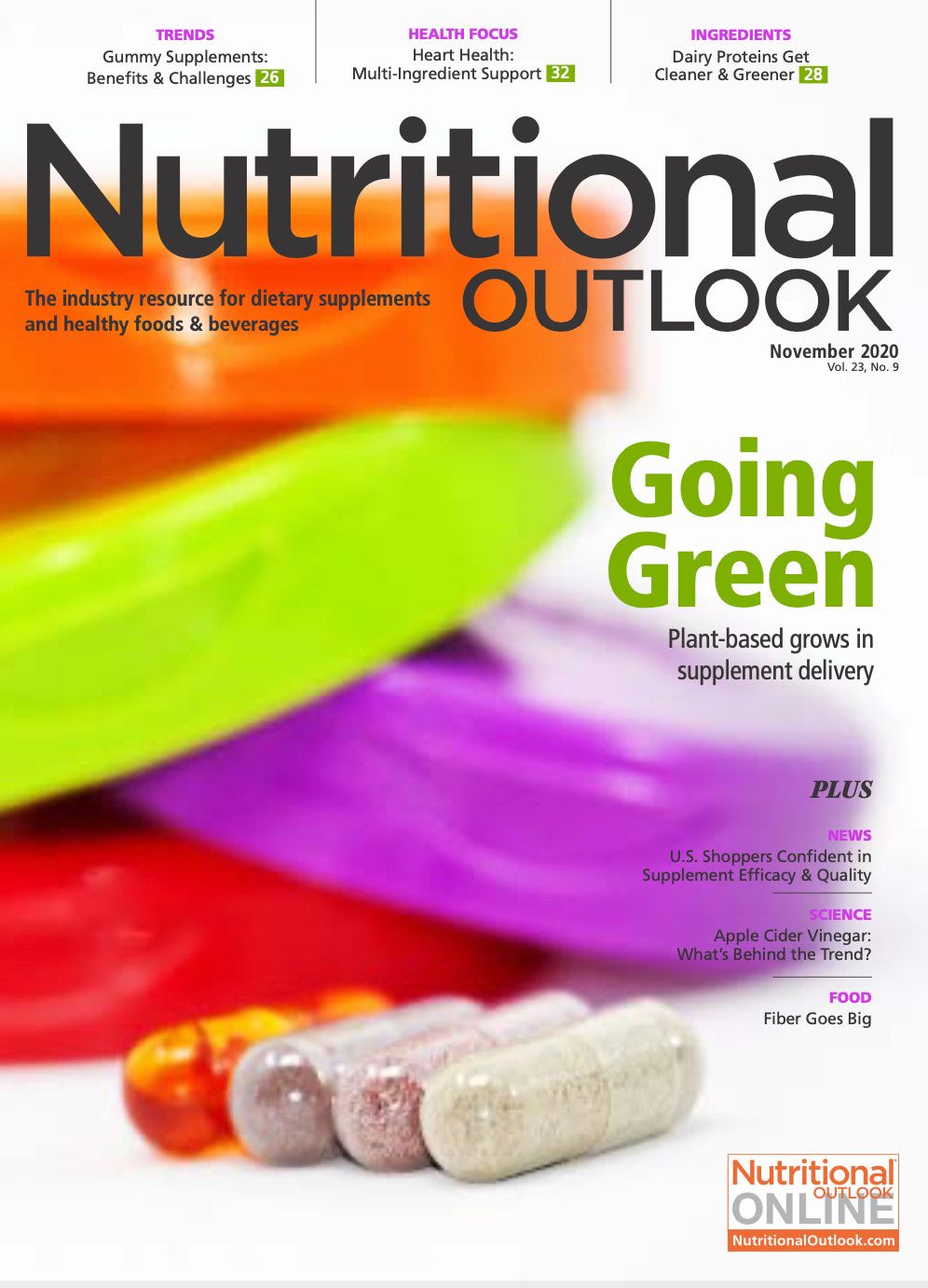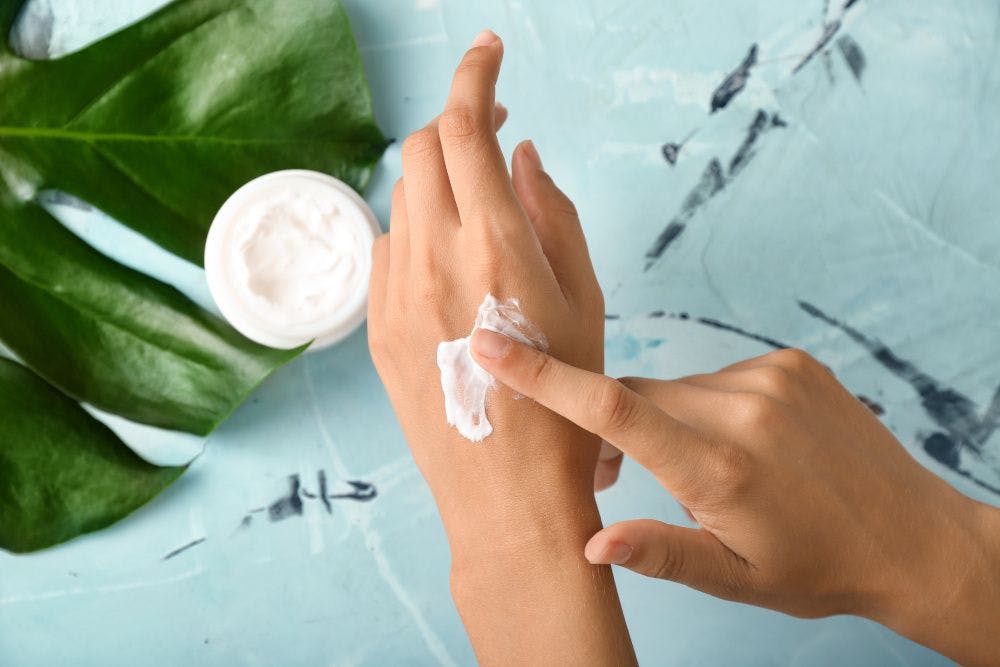Postbiotic ingredients for skin health. Do they work?
Exploring the potential of postbiotic beauty
Photo © AdobeStock.com/Pixel-Shot

It’s been some time since probiotics were just “good gut bugs”; now we nurture our microbiomes in the interest of everything from improved immune and mental health to clearer, healthier skin.
And to that point, a recent Technavio report1 forecasted growth of $883.97 billion in the probiotic-cosmetic market over the next four years—a CAGR of more than 7%—as accelerating demand for “natural” beauty drives up sales.
But might skincare formulators be wiser to cut out the middleman (or middle microbes, as it were) and design products that deliver what make probiotics so valuable in the first place—that is, postbiotics?
After all, it’s these bioactive byproducts of probiotic metabolism—not the bacteria themselves—that effect improvements in our skin’s condition.
So perhaps that’s why Anurag Pande, PhD, vice president, scientific and regulatory affairs, Sabinsa (East Windsor, NJ), calls postbiotics “the next addition to the probiotic formulation family. Instead of using probiotic cells in skincare, we can confer benefits using the same strains’ metabolites.”
Ready for Their Close-Up?
Paula Simpson, beauty-market expert and founder of Nutribloom Consulting, certainly endorses that strategy. “Postbiotics’ potential microbial-balancing, antioxidant, and immunomodulatory properties can have a positive effect on both our inner and outer health,” she says.
But while a nutrition-minded segment of the public is finally catching on to postbiotics’ role in systemic and gut health, the compounds’ relationship to glowing skin remains mainly the province of skincare and wellness professionals. As Simpson concedes, “The consumer hasn’t been fully introduced to postbiotic beauty.”
Begin with the Microbiome
Once they are, they’ll learn that the benefits begin with the skin’s microbiome.
As Simpson explains, “The skin is the largest organ of the body and controls water and nutrient loss while also preventing infection from harmful substances that would otherwise enter it.” Probiotic microbes living on the skin—the skin’s microbiome—also protect against pathogens, participate in the immune response, and support skin metabolism.
Prebiotics help “fuel” these beneficial probiotics, and when the latter metabolize their fuel via fermentation, they create postbiotic metabolites that remain on the skin to “offer a source of nourishment, modify metabolic reactions on the skin, and help suppress the overgrowth of bacteria or other pathogens harmful to it,” Simpson says.
Mix of Metabolites
She classifies postbiotics into five broad types: nutrients like B vitamins, vitamin K, and some amino acids; short-chain fatty acids that help balance the gut’s pH and render it inhospitable to pathogens; bacteriocins, or naturally antimicrobial peptides that also suppress undesirable bacterial growth; carbohydrases that help probiotics digest fibers; and hydrogen peroxide, which helps squash the growth of yeasts like Candida.
Pande adds that while each probiotic strain generates its own mix of metabolites, “these compounds can positively affect the host’s own metabolic pathways and microbiome, and yield benefits related to immunomodulatory, antimicrobial, or even antioxidant functions.”
Proof Is in the Product
Which explains why they’re a perfect fit for skincare. And indeed, Pande sees postbiotics’ most significant opportunities as actives in formulations that target inflammation, attenuate the signs of aging, protect against pollutants, and promote the skin microbiome itself—all of which, he says, “are people’s main skin concerns today.”
So why aren’t postbiotics making a splash at Sephora? They may be, as existing probiotic skincare formulations “already contain postbiotic ingredients as lysates or extracts,” Simpson points out. “Remember, the natural decomposition of the formulations also gives rise to postbiotics.”
Alas, we don’t know precisely which of these coincidental postbiotics actively support our skin’s health and microbiome. But that will change. As research isolates and identifies individual metabolites’ mechanisms of action, Simpson predicts, “We should see an evolving postbiotic beauty market.”
Adding to the Evidence
A roster of studies is already strengthening its scientific support.
Simpson points to a recent human trial2 showing that three months’ application of a gel containing a postbiotic peptide improved subjects’ symptoms of alopecia areata versus placebo.
“Another study3,” she continues, “showed that microbe viability isn’t essential to increasing systemic oxytocin levels in support of skin wound healing, and that the postbiotic lysate metabolite of Lactobacillus reuteri alone is sufficient to boost systemic oxytocin levels and improve wound-repair capacity.”
Pande notes that internal research at Sabinsa found its branded postbiotic ingredient LactoSporin, a metabolite of Bacillus coagulans MTCC5856, effective at combating skin pathogens like Propionibacterium acnes, a key culprit in acne development.
“Similarly, studies on oxidative stress led to our exploring LactoSporin’s antioxidant capacity and found it to have significant activity against inflammation and inflammatory enzymes like collagenase, which are responsible for the collagen breakdown in skin that leads to wrinkle formation,” he adds.
The team determined that the postbiotic can even induce hair growth via stimulation of hair papilla cells, and further research points to further dividends, including defense against pollutants and UV-induced skin damage. “There are quite a lot of benefits and a variety of applications, both cosmetic and nutritional,” Pande says.
Dead or Alive?
Another plus for postbiotics: Unlike probiotics, they needn’t be live to be active.
Notes Pande, “While the skin’s microbiome is a target for improving its health, the use of live probiotic cells poses limitations in formulation, storage, and shelf life.”
Postbiotics, by contrast, don’t, and present a wider variety of application options, more economical dosing, and “a lack of the regulatory hurdles involved in formulating with live probiotic cells,” Pande says, adding that his company’s LactoSporin retains its efficacy through manufacturing and storage.
In fact, Simpson suggests, probiotics’ inclusion in skincare formulations “may even increase the viability, potency, and shelf life of probiotic bacteria and synbiotic formulations.” And their greater absorption, delivery, extraction, and overall suitability to cosmetic products “make them attractive and perhaps even more cost-effective ingredients to formulate with,” she says.
But just as every probiotic produces a mix of postbiotic metabolites all its own, every consumer’s skin microbiome is unique. “Thus, formulations may work differently based on individuals’ skin-microflora population, concentration, and activity,” Simpson points out. “So, product claims and consistency could be a challenge. But as industry advances, I’m sure personalized approaches to microbiome beauty will also evolve.”
Being “new arrivals,” Pande adds, “Postbiotics will have to be formulated and tested for long-term stability relative to the actives traditionally used in these categories.”
But that’s all in a day’s work for forward-thinking skincare brands that already consider microbiomal beauty—postbiotics included—the path forward. As Simpson says, “The skin microbiome is a dynamic living shield, and skincare products should work to support skin-microbiota metabolism.”
References
- Technavio report. “Probiotic Cosmetic Products Market by Product, Distribution Channel, and Geography—Forecast and Analysis 2020-2024.” Published February 2020.
- Rinaldi F et al. “Efficacy of postbiotics in a PRP-like cosmetic product for the treatment of alopecia area celsi: a randomized double-blinded parallel-group study.” Dermatology and Therapy, vol. 10, no. 3 (June 2020): 483-493
- Varian BJ et al. “Microbial lysate upregulates host oxytocin.” Brain, Behavior and Immunity, vol. 61 (March 2017): 36-49

Prinova acquires Aplinova to further increase its footprint in Latin America
April 7th 2025Prinova has recently announced the acquisition of Brazilian ingredients distributor Aplinova, which is a provider of specialty ingredients for a range of market segments that include food, beverage, supplements, and personal care.




















